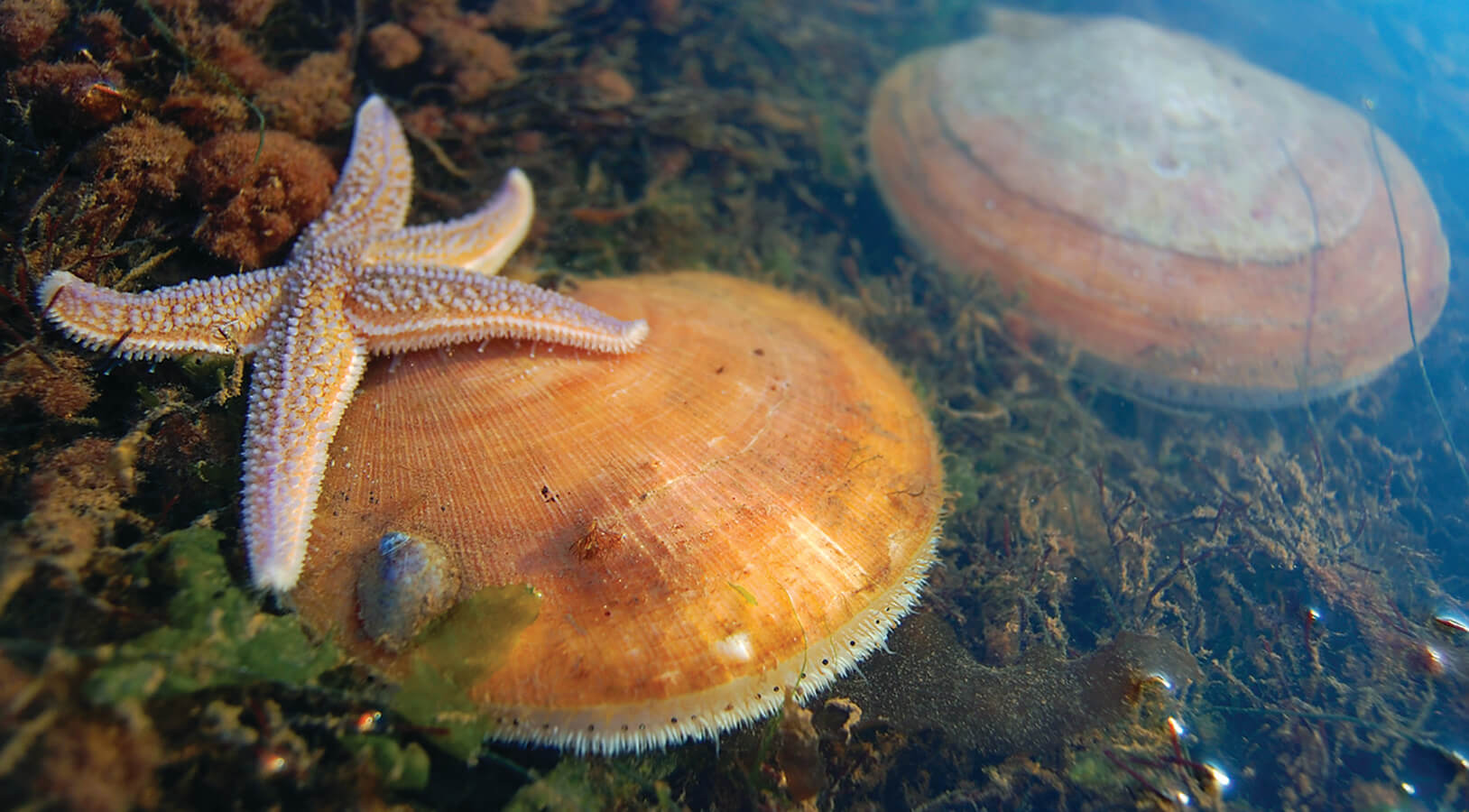Detecting scallop spawning
Skylar Bayer, who graduated last spring from the University of Maine with a Ph.D. in marine biology, has been studying scallops for six years in professor Richard Wahle’s lab at the Darling Marine Center. Her research addresses questions about scallop reproduction. Scallops are broadcast spawners, releasing their eggs and sperm separately into the water. Fertilization happens by random encounters.
Bayer knows about scallop spawning events from both laboratory and field experiments. However, even under a microscope, it’s difficult to distinguish the eggs, sperm, embryos and larvae of scallops from those of other bivalves.

In research funded by Maine Sea Grant, Bayer is collaborating with microbial ecologist Peter Countway, a senior research scientist at Bigelow Laboratory for Ocean Sciences in East Boothbay, Maine, to detect scallop spawning without having to collect, tag, track, tend, dissect or harvest.
They have developed a technique that uses three pieces of DNA that work together to locate and amplify scallop DNA against the backdrop of millions of other DNA types in the environment. The goal is to determine whether it can detect scallop DNA in a typical seawater sample.
Bayer and Countway successfully used the method to detect spawning scallops in the laboratory. Now they are extracting DNA from ocean water samples to determine if they have captured any spawning events.
There is growing interest in environmental DNA — e-DNA — techniques for assessing biodiversity, detecting the presence of invasive or toxic species, or studying migration patterns. The signatures of life are everywhere, revealing where animals have been and, in the case of spawning scallops, what they’re doing.
“Trying to capture spawning events in the field in real-time is risky and requires a lot of time and effort, but the payoff is worth it,” says Bayer. “If we can detect spawning events with this method, we could open a whole new door into understanding reproduction and population dynamics in marine animals.”
